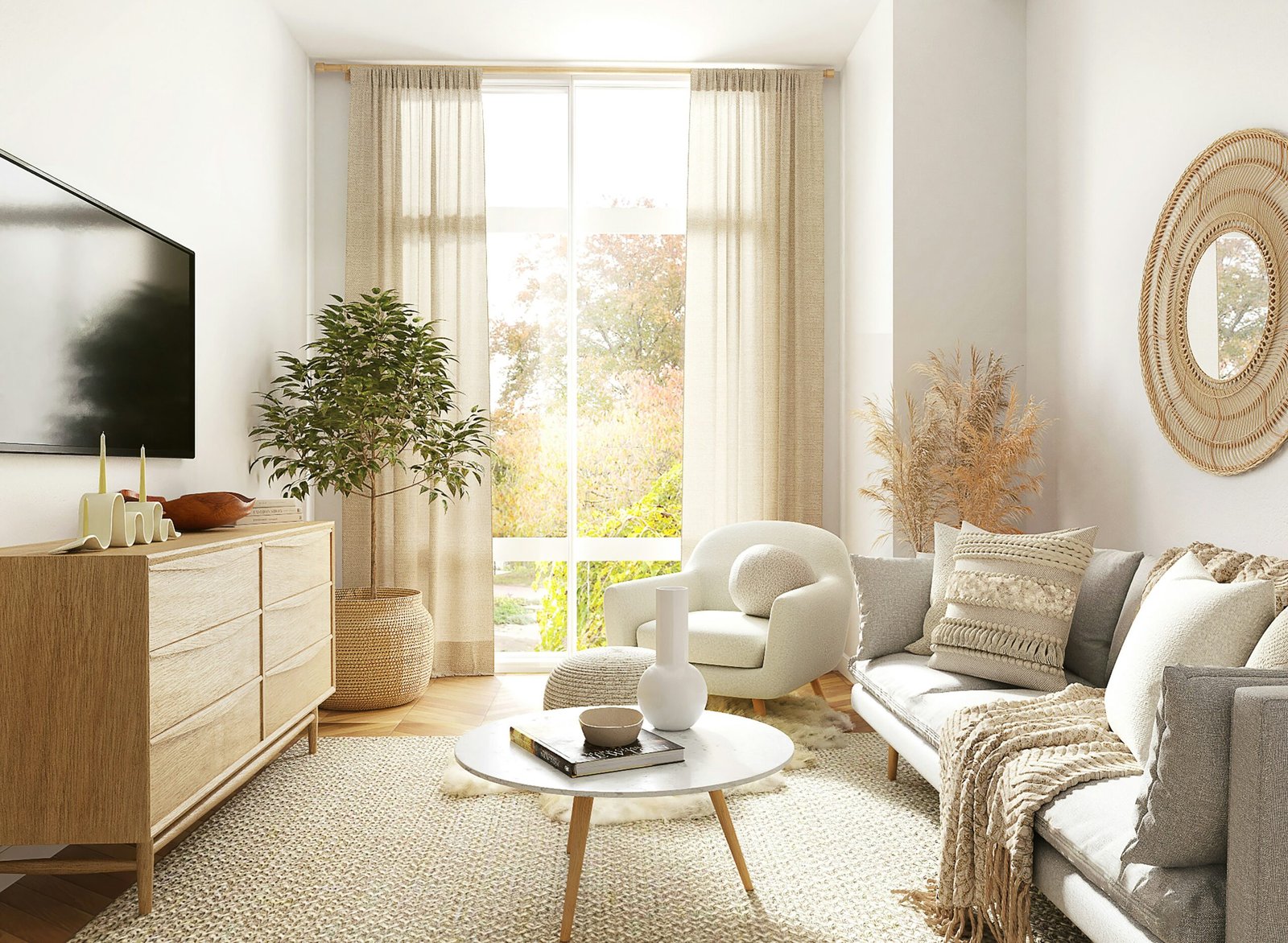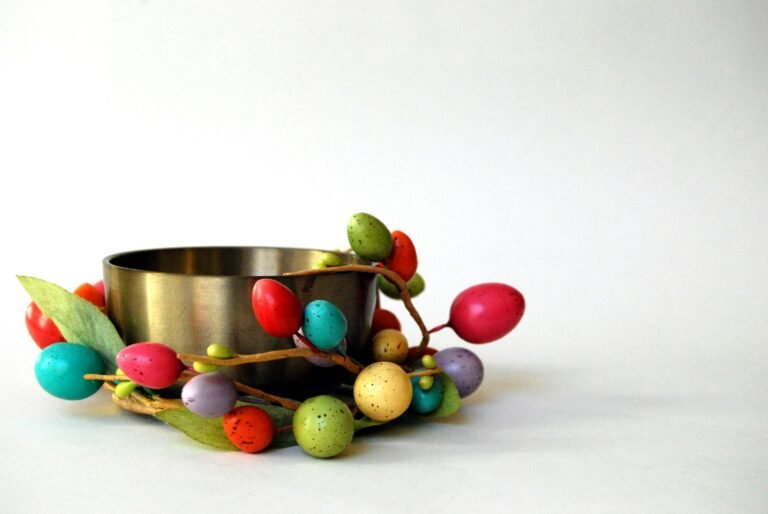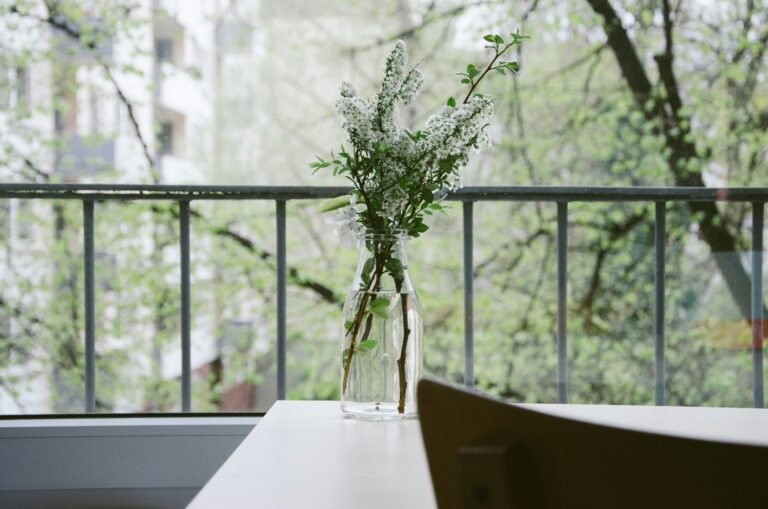Ever feel like your home is stuck in one season all year round?
Maybe it’s mid-July and your living room still screams “cosy winter night,” or you’re dragging out Halloween candles in April just because they’re the only ones you’ve got. You love the idea of switching things up, but the thought of redecorating every month? Exhausting. Expensive. And kind of overwhelming.
That’s where monthly mood boards come in.
Mood boards aren’t just for designers or Pinterest pros — they’re the easiest way to set a seasonal vibe in your home without redoing everything. A fresh candle scent, a new cushion cover, a different art print — small changes can completely shift the mood of your space.
I’ve put together a month-by-month guide to seasonal mood boards that’ll keep your home feeling fresh, inspiring, and in sync with the world outside. Whether you’re a maximalist with a storage closet full of options or someone who just wants to feel a little more in tune with the seasons, this guide is for you.
Let’s make your space feel like it’s breathing with the year — not stuck in time.
How to Use a Mood Board
Let’s start with the basics: what actually is a mood board?
Think of it like a vibe check for your space. It’s a visual collage — made up of colours, textures, photos, and objects — that helps you shape how a room feels before you start shifting things around. Designers use them to plan spaces, but you can use them just as easily to update your home month by month.
Here’s how to make it work for you — no fancy tools or design degree needed.
1. Pick a vibe
Each month has its own feel — cosy in January, blooming in May, sun-drenched in August. Your first step is to decide what kind of mood you want to bring into your space that month. Is it calm? Crisp? Earthy? Romantic? That vibe becomes your anchor.
2. Build a simple visual board
You can do this physically (a cork board or sketchbook) or digitally (Pinterest, Canva, even your phone’s photo album). Gather 5–10 images that reflect the mood — think nature shots, fabric swatches, seasonal foods, interior inspo. Don’t overthink it. If it feels right, it belongs.
3. Choose a colour palette
What colours sum up the month for you? Rich burgundy and taupe in November? Sky blue and soft white in March? Jot down your key shades — they’ll guide your decor swaps.
4. Add textures + elements
Think beyond colour. Add notes on materials like linen, rattan, velvet, glass. Then think about seasonal touches — candles, florals, artwork, books, even scents. Your mood board should reflect the full sensory feel of the month.
5. Pull 1–3 things into your space
This is the magic step. Use your mood board to make small, easy updates:
- Swap out a cushion cover
- Add a seasonal bouquet or dried branch
- Change the throw blanket
- Light a new candle
- Bring in a piece of art or photography that fits the vibe
It’s not about overhauling everything. It’s about giving your home a little nudge into the season — something that makes you smile when you walk in the door.
Monthly Mood Boards: Decorating Inspiration from January to December
Each month brings its own energy — from frosty mornings to balmy sunsets. These mood boards are designed to match that feeling and help you bring it into your home, one little shift at a time. Below, you’ll find a vibe, colour palette, and simple decor ideas for each month — nothing over-the-top, just beautiful, seasonal touches anyone can pull off.
🧊 January – Fresh Start
Vibe: Clean, calm, and reflective. Like opening the windows after a stuffy December.
Colour Palette: Soft whites, frosty blues, pale greys
Materials: Linen, frosted glass, ceramics
Simple Swaps:
- A fresh white candle or diffuser (eucalyptus or cotton scent)
- A clear vase with bare branches
- Decluttered surfaces with soft, folded throws
💗 February – Subtle Romance
Vibe: Soft, warm, and slightly dreamy — a little Valentine’s without the cheese.
Colour Palette: Blush pink, cream, muted terracotta
Materials: Velvet, rose quartz, brushed brass
Simple Swaps:
- Pink-toned cushions or a warm throw
- A few dried roses or ranunculus in a small jug
- Soft lighting — fairy lights or a table lamp
🌿 March – The Slow Thaw
Vibe: Hopeful and earthy, like watching the frost melt off your windowsill.
Colour Palette: Sage green, soft beige, misty blue
Materials: Woven textures, ceramics, spring florals
Simple Swaps:
- A leafy plant or pot of early daffodils
- Woven placemats or storage baskets
- Botanical art or herb-inspired prints
🌸 April – Bloom & Buzz
Vibe: Lively and light. Spring’s finally here, and your space knows it.
Colour Palette: Petal pink, lilac, butter yellow
Materials: Linen, glass, painted wood
Simple Swaps:
- A fresh floral table runner
- Coloured glass candle holders
- A floral-printed cushion or two
🌞 May – Early Summer Ease
Vibe: Airy and full of life. Doors open, sunlight everywhere.
Colour Palette: Coral, leafy green, warm white
Materials: Rattan, cotton, glazed clay
Simple Swaps:
🍓 June – Backyard Bliss
Vibe: Lush, playful, and sun-drenched. Like a garden picnic on your windowsill.
Colour Palette: Strawberry red, lemon yellow, sky blue
Materials: Cotton, enamelware, painted ceramics
Simple Swaps:
- Checkered tea towels or cushions
- A big bowl of lemons or limes as decor
- Colourful outdoor-style string lights inside
🔥 July – Bold & Bright
Vibe: Hot weather, bold energy. Lean into colour and lightness.
Colour Palette: Terracotta, turquoise, golden yellow
Materials: Bamboo, terry cloth, glass
Simple Swaps:
- Bright cushion covers or a striped rug
- Tropical plant or a faux palm
- Citrus or sea breeze candles
🌻 August – Late Summer Luxe
Vibe: Slower pace, golden evenings. Still summer, but softer.
Colour Palette: Sunflower yellow, olive green, clay brown
Materials: Woven fibres, matte ceramics, linen
Simple Swaps:
- Dried sunflowers or wheat bundles
- Olive-toned tableware or accents
- Swap candles for lanterns or votives
🍂 September – Soft Shift
Vibe: A foot in both seasons — not quite summer, not quite autumn.
Colour Palette: Rust, muted green, warm grey
Materials: Canvas, suede, dried florals
Simple Swaps:
- Earth-toned cushions or a soft wool throw
- A few pinecones or foraged leaves
- Light layering with textiles
🎃 October – Cosy Contrast
Vibe: Warm, rich, and a little moody — autumn in full swing.
Colour Palette: Burnt orange, deep plum, charcoal
Materials: Velvet, dark wood, leather
Simple Swaps:
- Pumpkins (real or ceramic) as table decor
- A vintage-style lamp or darker candles
- Swapping lighter cushions for richer tones
🍁 November – Harvest Calm
Vibe: Earthy and still. Preparing to wind down for winter.
Colour Palette: Ochre, forest green, oatmeal
Materials: Wool, brushed metal, wood grain
Simple Swaps:
- Centrepiece with pinecones, candles, and eucalyptus
- A heavier blanket or quilt over the sofa
- Warm-toned fairy lights or lanterns
🎄 December – Soft Festive Sparkle
Vibe: Magical and moody — but with intention, not clutter.
Colour Palette: Deep green, burgundy, warm gold
Materials: Velvet, metallics, wool
Simple Swaps:
- A garland across the mantel or shelf
- Candle clusters in gold holders
- Festive scents like fir, clove, or cinnamon
Tips for Making Seasonal Swaps Work for You
You don’t need to buy a dozen new things every month to bring these mood boards to life. In fact, most of the magic happens when you work with what you’ve got — just rearranged, reimagined, or refreshed.
Here’s how to make the seasonal swap game totally doable:
1. Shop your own home first
Before you buy anything new, take a walk around your space. That cushion cover you stored last spring? The glass vase on a shelf you forgot about? These small, familiar items can feel fresh again when moved or styled differently.
2. Start with a signature swap
Pick one go-to item to update each month. For some, it’s cushions. For others, it’s a seasonal candle scent, flowers on the table, or a rotating print on the wall. Choose your favourite and make that your “anchor” swap — everything else is a bonus.
3. Embrace natural and foraged decor
Twigs, leaves, flowers, shells, pinecones — the outdoors gives you free seasonal decor. A branch in a vase can look more intentional than a store-bought centrepiece. Just rinse and dry your finds, and you’re good to go.
4. Rotate and store smartly
Keep a small “seasonal box” in your cupboard — a place to store out-of-season textiles, candles, or mini-decor bits. That way, nothing gets lost and you’re not starting from scratch every year.
5. Use scent to shift the mood
Swapping a candle or diffuser scent instantly changes how a space feels. Fresh and herbal in spring, citrusy in summer, spiced in autumn, woody in winter — your nose does half the work.
6. Let go of perfection
Your home doesn’t have to look like a magazine spread. A seasonal mood board is a feeling, not a formula. It’s your space, your style, and your rhythm. Even one small change can make a difference.
Let Your Space Evolve With the Seasons
Your home doesn’t need a big renovation or a shopping spree to feel fresh. It just needs a little attention — a shift in mood, a nod to the world outside, a space that grows with you month by month.
Mood boards aren’t about creating perfect rooms. They’re about setting a tone. Giving yourself permission to play. Letting your home reflect how the season feels to you — not just what Instagram says it should look like.
So as the months roll on, don’t stress about making it look “right.” Trust your gut. Swap a few things. Light a new candle. Move that chair. Add a flower. Take one away. It all counts.
You don’t have to change everything — you just have to change something.
Here’s to a home that moves with the seasons… and keeps you inspired all year long.
Alex is the creator of Homely Haven, a space dedicated to simple, stylish ideas for interiors and gardens alike. With a passion for cozy living rooms, inviting outdoor spaces, and practical DIY solutions, Alex shares tips and guides that help turn any house into a true home.
From budget-friendly decorating hacks to weekend garden projects, the goal is always the same: to inspire you to create spaces that feel personal, beautiful, and welcoming. When not writing, Alex is usually rearranging furniture, sketching new garden layouts, or exploring design trends for the next project.








